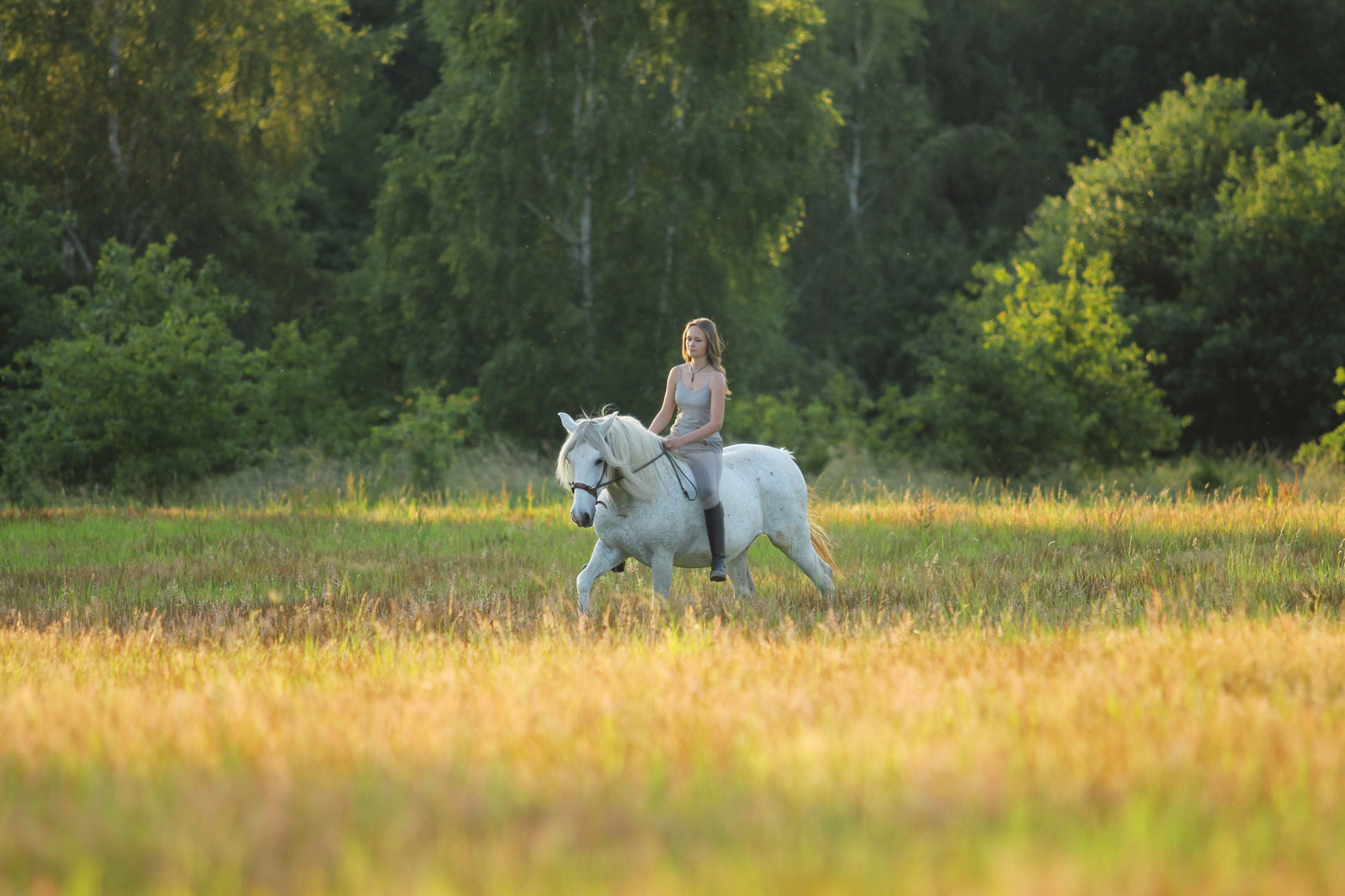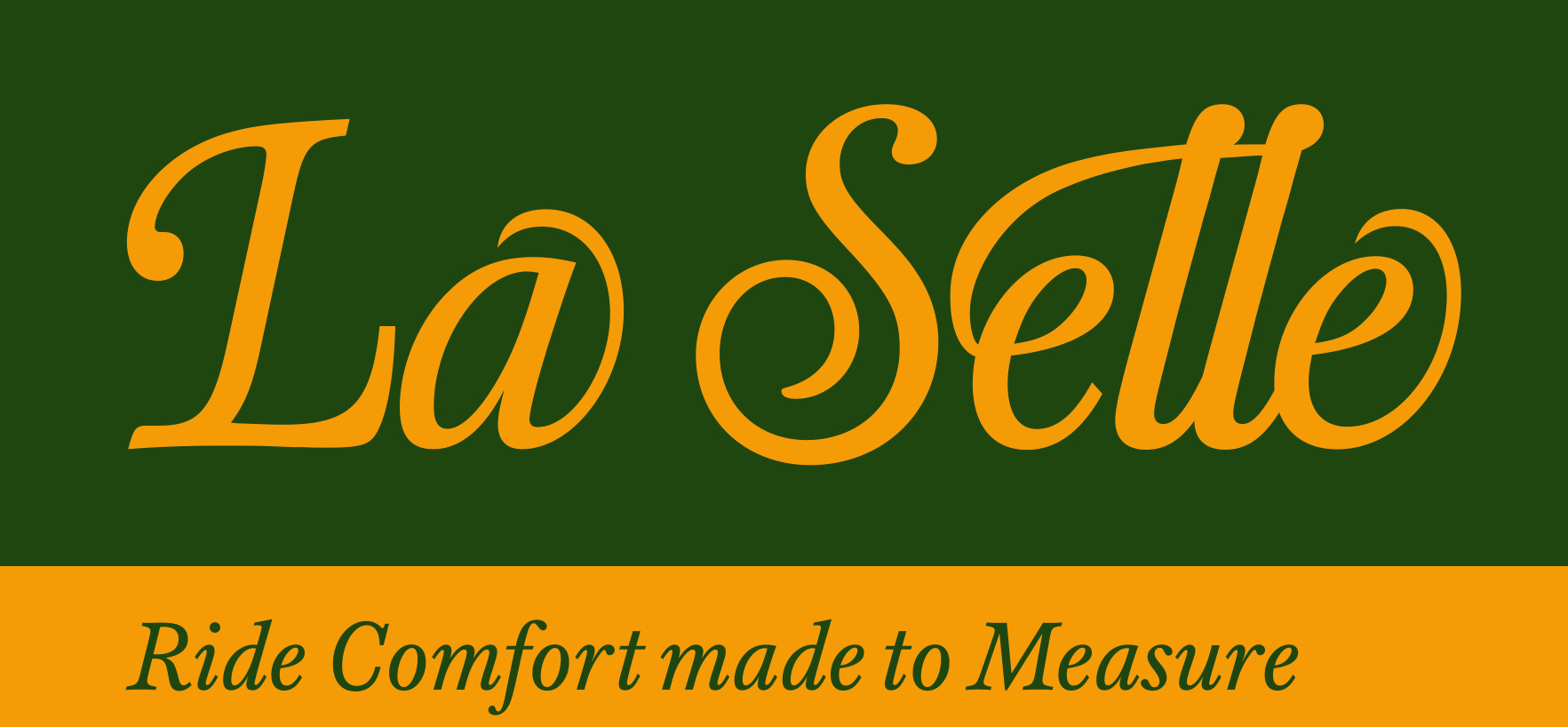Here you will find many interesting topics on horseback and saddle!

Saddle problems
Saddles that slip are a common problem in horse riding. On the standing horse, everything is alright but in riding, the saddle slips forward. Many riders and experts are then at loss as there are several minor factors that cause the saddle to slip.
What is so bad about a saddle slipping forward?
The front part of the saddle or rather the rider’s weight presses on the horse’s shoulders like a clothes peg. That can cause the horse to take shorter steps because the pressure on its shoulders forces the horse to place its foot earlier on the ground.
As time goes by, the problem will get more and more obvious. In the worst case, the horse will only drag itself on the forehand or even begin to stumble. The first thing you’ll perceive is the irregular rhythm in the forehand. Later, the shortening will spread throughout the whole horse until it reaches the hindquarters.
Chair seat
The higher and broader shape of the horse’s shoulder can also cause the centre of gravity of the saddle to tip backwards. In that case, the rider’s weight isn’t distributed evenly across the horse’s back anymore. The pressure increases on the back part of the saddle and the rider is placed into the chair-seat position. Most riders will try to compensate for the imbalance by leaning forward, away from the new centre of gravity dictated by the saddle. However, the rider is likely to slip backwards again when the horse moves forward. That’s when the seat becomes uncomfortable. The rider starts rocking forwards and backwards and the horse needs to adapt to a new centre of gravity at every stride.
Compensating for the seat mostly happens subconsciously. When you ask the riders about their feeling in the saddle, they will often reply: „I’m falling forward.“
Physical damage
The increased pressure on the rear of the saddle will restrict the muscle latissimus dorsi which is involved in moving the forehand backwards. The longissimus lies deeper in the horse and is responsible for stretching the spine and enabling the lateral bend of the horse. This muscle will also get damaged when it’s exposed to the increased load of the rider. A horse with a stretched spine (which means with a hollow back) can’t get the correct bend for anatomical reasons.
As the saddle is now placed on top of the shoulder blades, and they keep rotating, the saddle will also start to move from side to side. The rider’s seat will become even more imbalanced, making it hard for the horse to find its own balance. Additionally, the pressure of the saddle on the horse’s shoulders will squeeze the skin nerves. And infraspinatus and trapezius, the muscles in the shoulders, will be strained unnecessarily.
To sum up: When the saddle slips forward, it is impossible to ride correctly. The horse will suffer physical damage. For this reason, it must be avoided that the saddle is placed on top of the horse’s shoulders.
Reason 1: The saddle was placed too far forward
If the rider didn’t saddle behind the shoulders, the saddle is likely to slip even further forward when the horse starts moving.
Fix:
Just saddle your horse again and make sure to position the saddle behind the shoulder blades.
Reason 2: The saddle doesn’t fit
If the centre of gravity of the saddle is too far back right from the start, the saddle is again likely to slip forward when the horse is in motion. While riding, the saddle will make its way forward inch by inch. It is also possible that a saddle slips forward because it is too wide. The horse’s shoulders are usually broader than the rib cage. The saddle will slip forward to find its own suitable position.
Fix:
The saddle will need to be refitted. This includes adjusting the saddle tree or rather the gullet plate, or changing the padding in the panels. If the saddle needs to be upholstered in the back part, make sure that the padding doesn’t get too firm. The saddler can help by inserting a wedge panel or by setting the panel deeper with a second piping.
Reason 3: The rider pushes the saddle forward
Unfortunately, we often see that riders come too far out of the saddle when they do rising trot, partly also in the wrong moment. This causes the saddle to be pressed forward towards, or in the worst case onto, the horse’s shoulder.
Fix:
Invest in a good riding instructor. You could even go back and take lunge lessons. That might sound ridiculous, but it is a necessity to educate your seat. Even some professional riders take lessons every day as most problems occur when the rider’s seat is imbalanced.
Reason 4: The saddle is too deep or too small for the rider
In that case, the rider’s pelvis is pressed forward. The joints in the spine, the hip and the knees, which are responsible for following the movement in suppleness, are blocked. As the horse’s motor is located in the hindquarters and the movement starts there, a stiff rider gets pushed from back to front. In this forward movement, the rider is pressed against the saddle and the knee rolls and pushes them further forward. In fact, that’s the reason why the knee rolls are often quite big on saddles with deep seats.
Fix:
You should have a saddler change your knee rolls. If your saddle is too small, however, we highly recommend buying a new one.
Reason 5: The girth is pulling the saddle forward
That always happens when the girth straps don’t run vertically into the girth groove. It is often possible to stop the saddle from slipping using a front girth strap. Here, we would also like to point out that it doesn’t help to tighten the girth excessively. The solution to the problem is to correct the girth position. However, the front girth strap can also cause problems. One common reason for that are the knee rolls. They press the front girth straps backwards. Influenced by the pull exerted on the straps, the girth will always try to go straight. If the knee roll prevents that, the saddle will be pulled forward.
Fix:
Have a saddler change the knee rolls. If your saddle is too small, you’ll have to buy a new one as soon as possible.
Reason 6: The girth is too tight or used incorrectly
With a Y-shaped strap, it is even more important to tighten the rear girth strap less than the front strap. Especially when it is attached to the back end of the saddle, the rear strap will pull the saddle forward onto the shoulders when it’s too tight. Even if the saddle doesn’t slip onto the shoulders but constantly hits against the shoulder blades, in the long run it will have the same impact on your horse. The rear girth strap is only supposed to be a balance strap. Even the most perfect girth needs to be used correctly.
Fix:
Don’t tighten the girth so much. Only make the girth tight enough to hold your saddle securely in place.
Reason 7: The knee rolls are positioned incorrectly
If the knee rolls are in the wrong place, too big or too firm, they will permanently push the rider’s leg backwards. It’s the same effect like with the deep-seated saddle. With the legs pushed backwards, the rider’s pelvis will tilt forward. Now the rider will have trouble following the motion. He or she will constantly apply pressure on the saddle. This excessive pressure from the knees and thighs will push the saddle forward. The firmer (harder) the knee rolls are, the bigger is the impact. Sometimes it’s possible that hard knee rolls, which are even in the correct position, will push the saddle forward. Then, the knee rolls can’t cushion the rider bouncing in the saddle and the rider’s forward movement will directly be communicated to the horse.
Fix:
The knee rolls need to be made smaller or bevelled by a saddler. The position of the knee rolls is right when the rider’s leg only touches them slightly in a neutral leg position. The knee rolls can’t correct any sitting errors. Riding lessons and stretching exercises will also help you. If necessary, you can replace the knee rolls with softer ones. Advice for all saddlers: Foam material with a density/hardness of 50/75 or 75/100 works well in practice. In our opinion, however, it is best to ride without any knee rolls at all.
Reason 8: The horse is tense
When the back isn’t swinging, the horse is likely to hollow it instead. Usually, the saddle passes on all movements to the rider. That’s why the rider will feel every back movement of the tense horse as a little bump. Because of the rider’s stiff seat, the rider will start bouncing in the saddle. With every stride, the saddle will get a forward impulse towards the horse’s shoulders.
Fix:
Make sure to find and stop what is causing the tensions. You will need to have your horse examined thoroughly. There many possible reasons for tensions. Here are some examples:
- The horse was standing in the draught
- The saddle padding is too hard
- The saddle padding has gone lumpy
- The horse has blockades
- The horse has muscular problems
- The horse has hoof problems
- The horse has dental problems
- The bit doesn’t fit
- The horse is overtaxed
- The horse is stressed
- The rider lacks ability
- Etc.
After having checked all those aspects and fixed all errors, your saddle should stay behind the horse’s shoulders. Tools like cruppers or a surcingle (not to be confused with the front girth strap) have to be rejected. A good saddle is supposed to fit both the rider and the horse and should remain in the correct position without any help.



